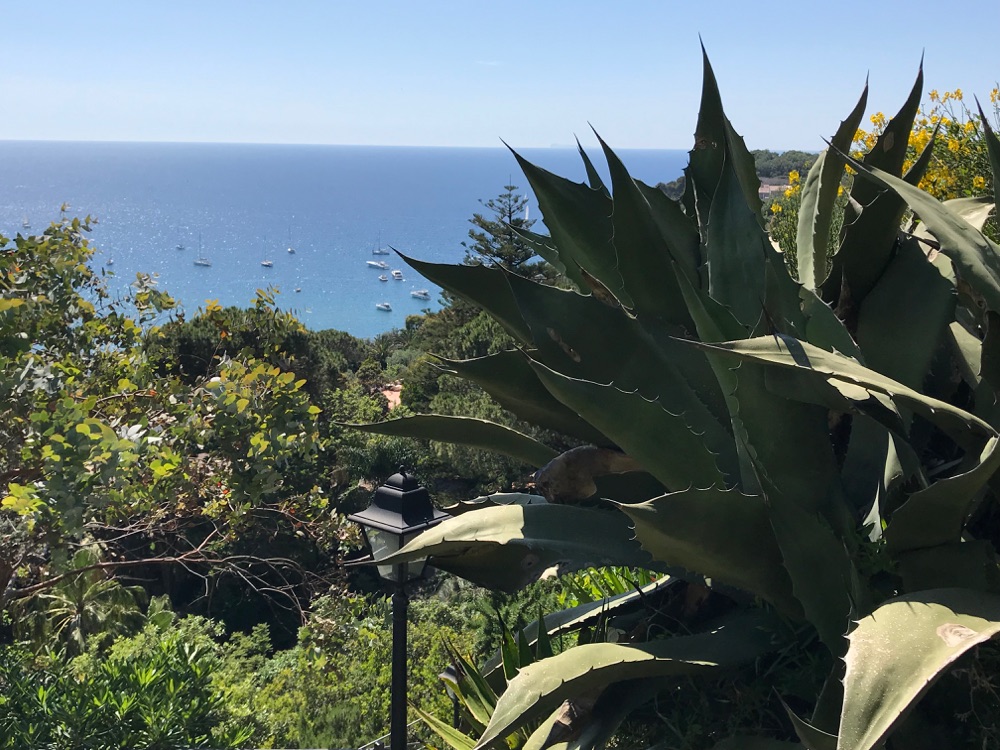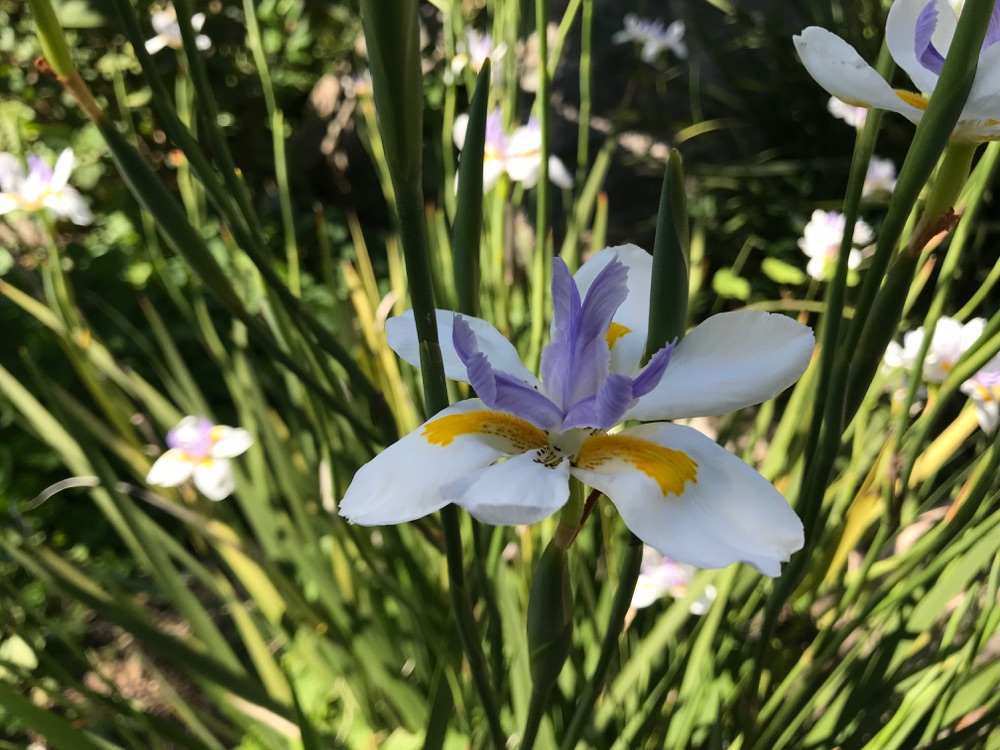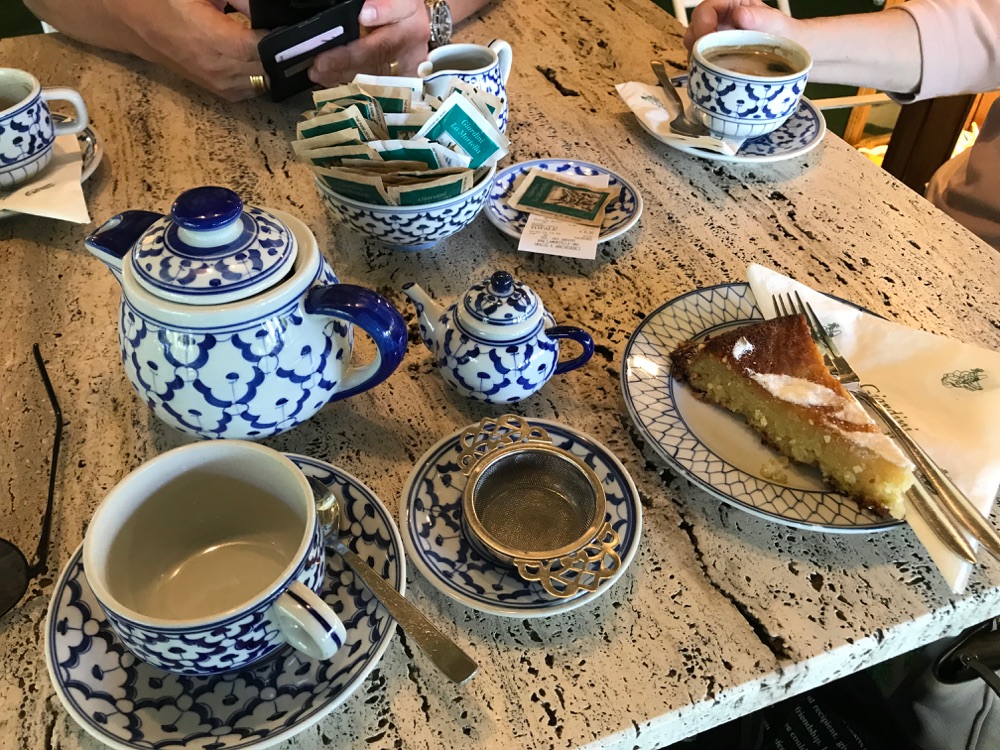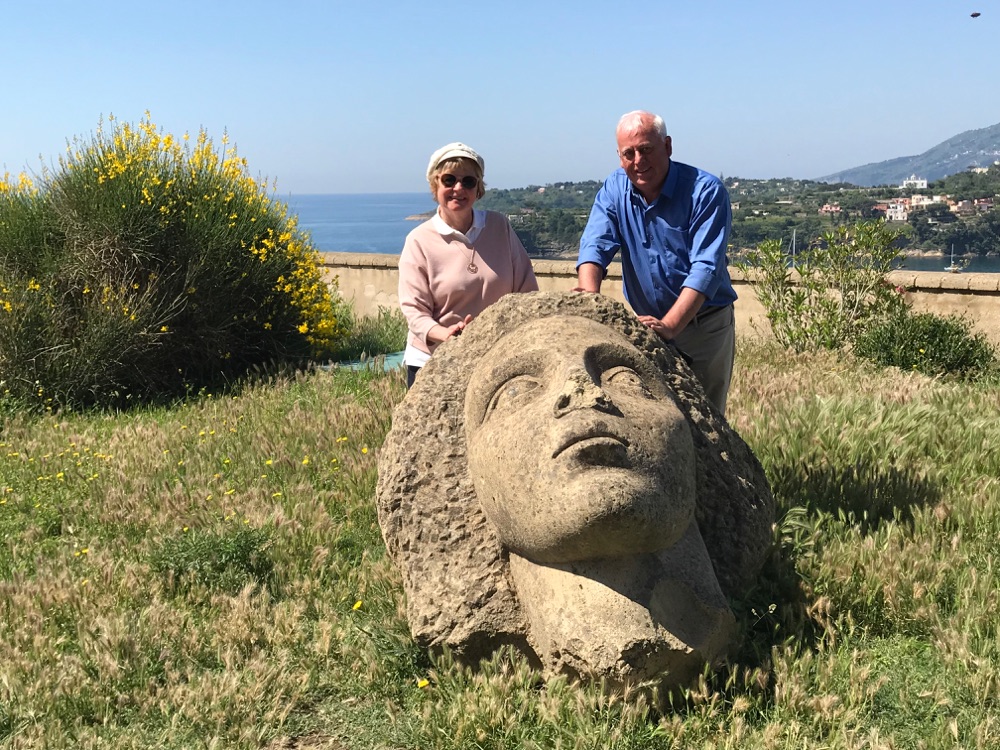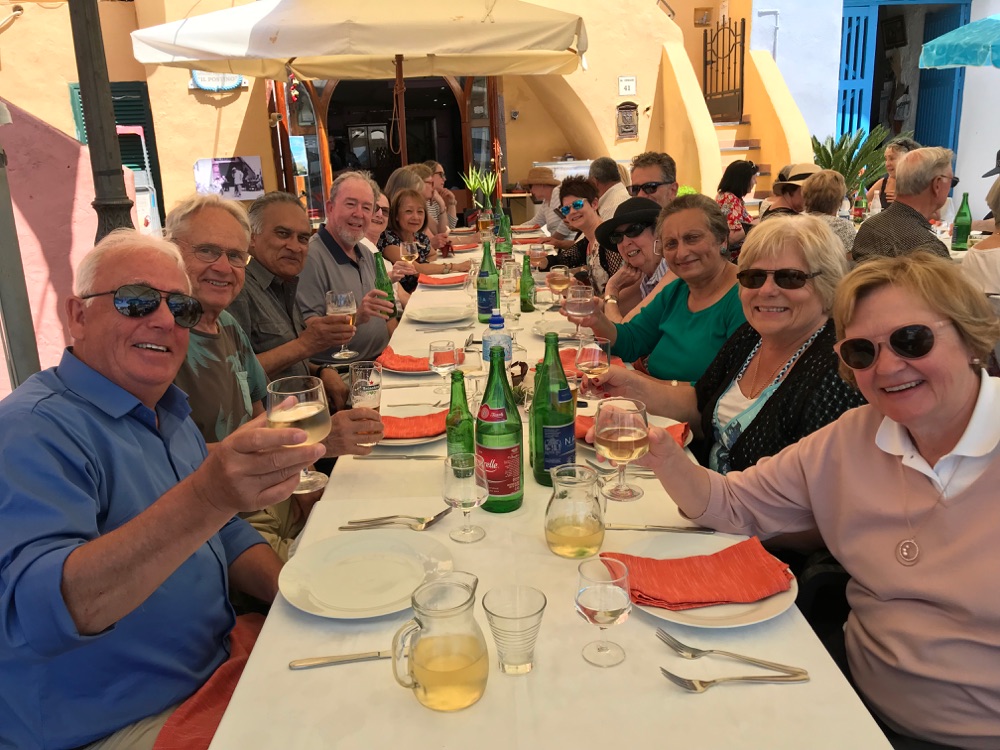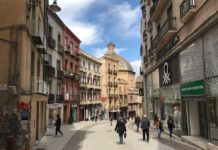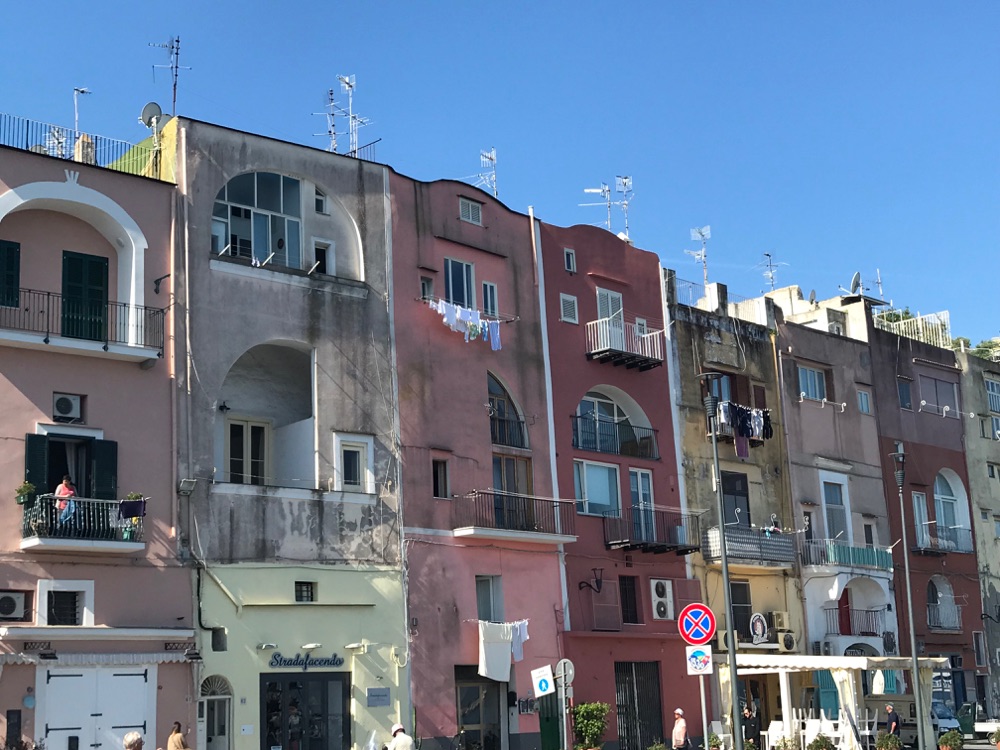
For our last day of our Italy Islands and Lakes Tour, we took the ferry from Naples to visit Procida, a small island that apparently is rarely visited by tourists although it is very beautiful.
Procida is home to about 10,000 inhabitants. However, its population swells to about 30,000 in summer with day-trippers from Naples.
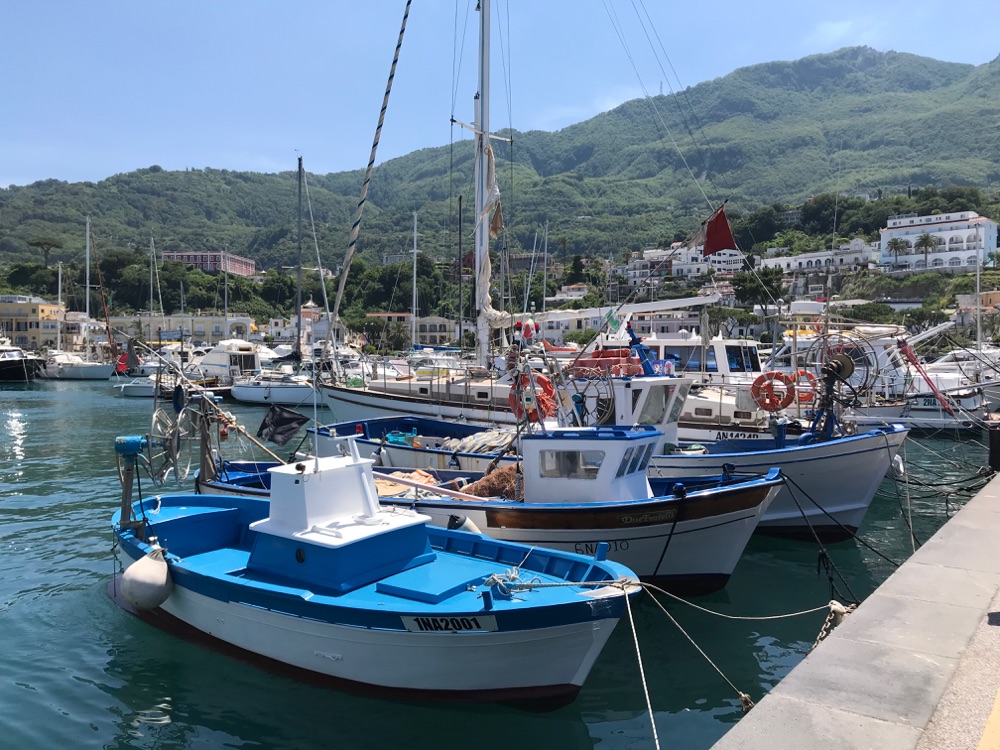
We were told the island becomes a chaotic nightmare in summer with a lot of traffic congestion. But when we visited, it was quiet and peaceful and charming.
We wanted to visit Procida after seeing photos of the pretty hamlets and its many picturesque coves and little hideaways.

Stepping ashore from the ferry, we were immediately confronted by impressive rows of colourful houses, mostly pastel shades of pink and yellow, as well as a harbour filled with brightly painted fishing boats bobbing up and down.
Five white taxis were waiting to whisk us away on a tour of the island’s key sights and spectacular scenic view points.
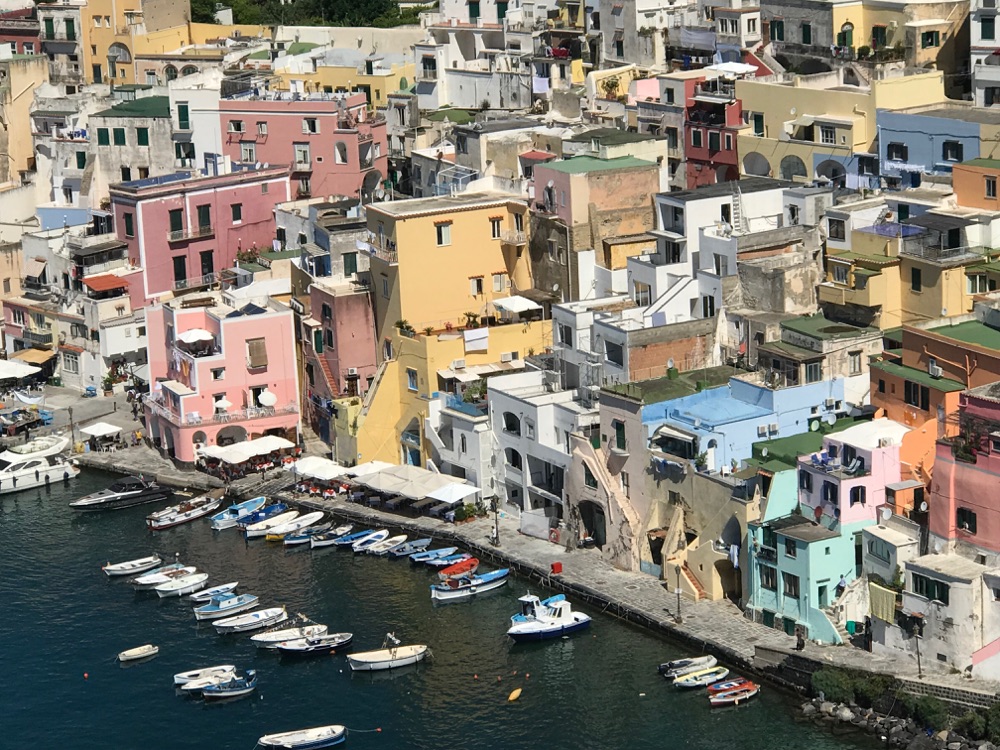
The narrow streets made our trip memorable with the convoy of vehicles moving quickly through impossibly narrow lanes and swinging sharply and dramatically around tight corners.
It started to feel a little like an exhilarating fairground ride, particularly when we narrowly escaped scraping the sides of oncoming vehicles.
Eventually, we stopped at the tiny cove of Marina di Chaiolellia for lunch.
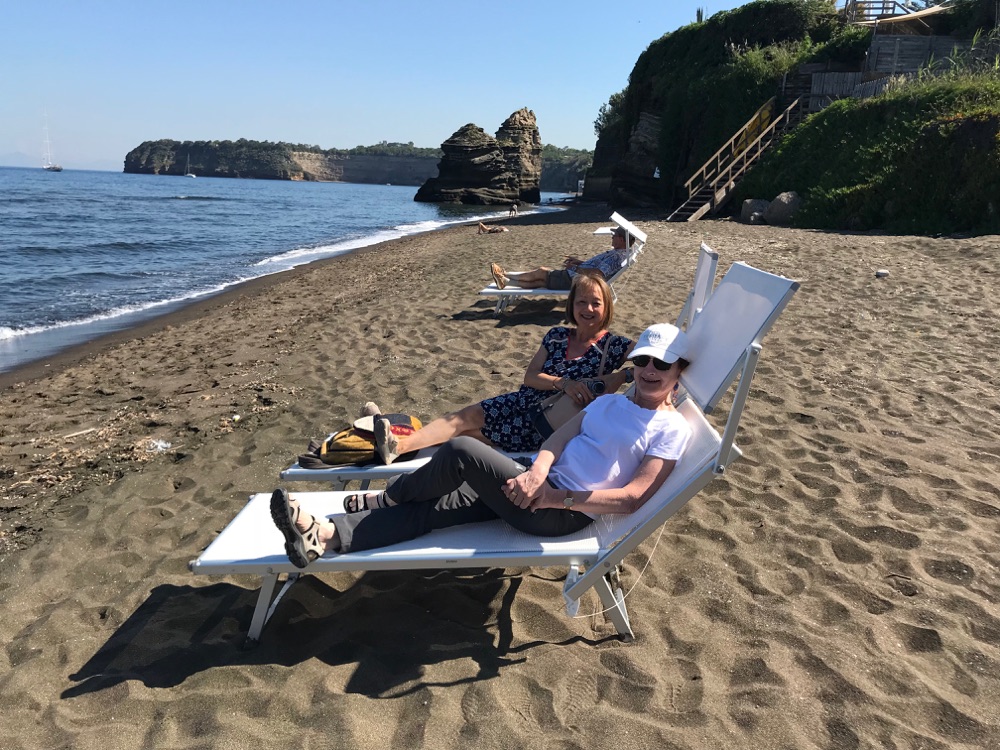
Some of our group went swimming. The rest sat in the waterfront cafe/restaurant and had wine and beer and enjoyed the beautiful scenery.
From Procida, we next took another jetfoil ride across to the neighbouring island of Ischia to visit La Mortella, a garden built by English classical music composer, Sir William Walton, and his Argentinian-born wife, Susana, in the 1950s.
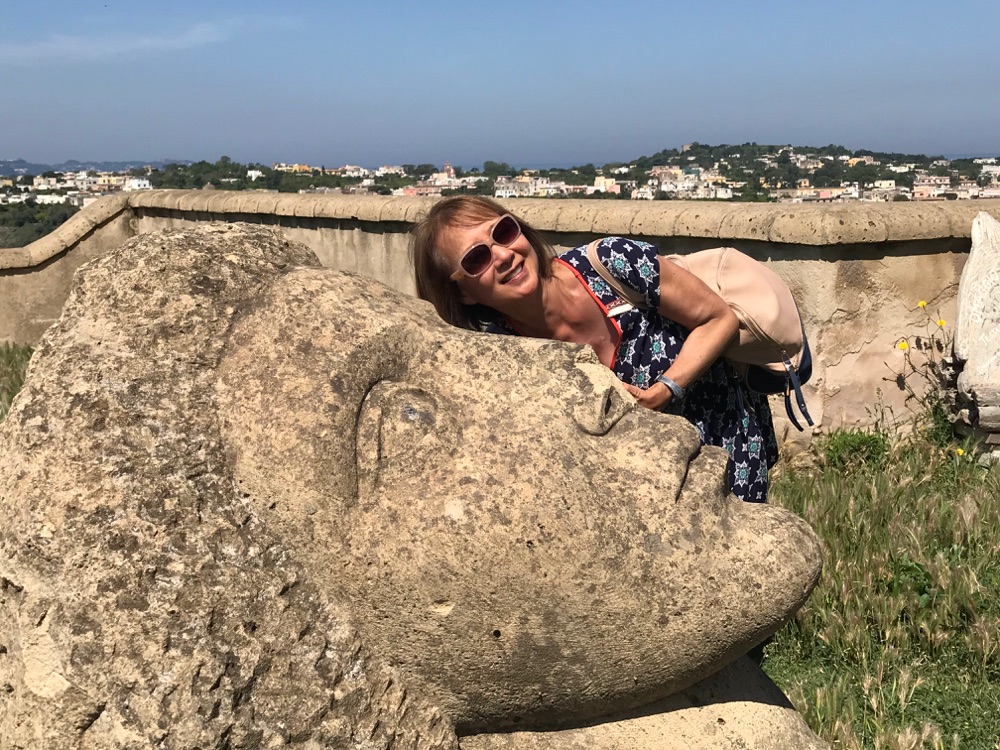
Apparently, neither of them could stand living in cold, dreary England any more after the Second World War and decided that Italy would be an appropriate compromise for both their temperaments.
William particularly liked the idea of composing music inspired by the warm light of this sunny, relaxing stretch of Italian coast.
We last visited La Mortella three years ago. We found it had not changed a lot.
The entrance and initial impact of the garden remain the same with a beautiful rill designed by Russell Page that runs in a long, thin line down the middle of the path along the lower woodland area of the garden.
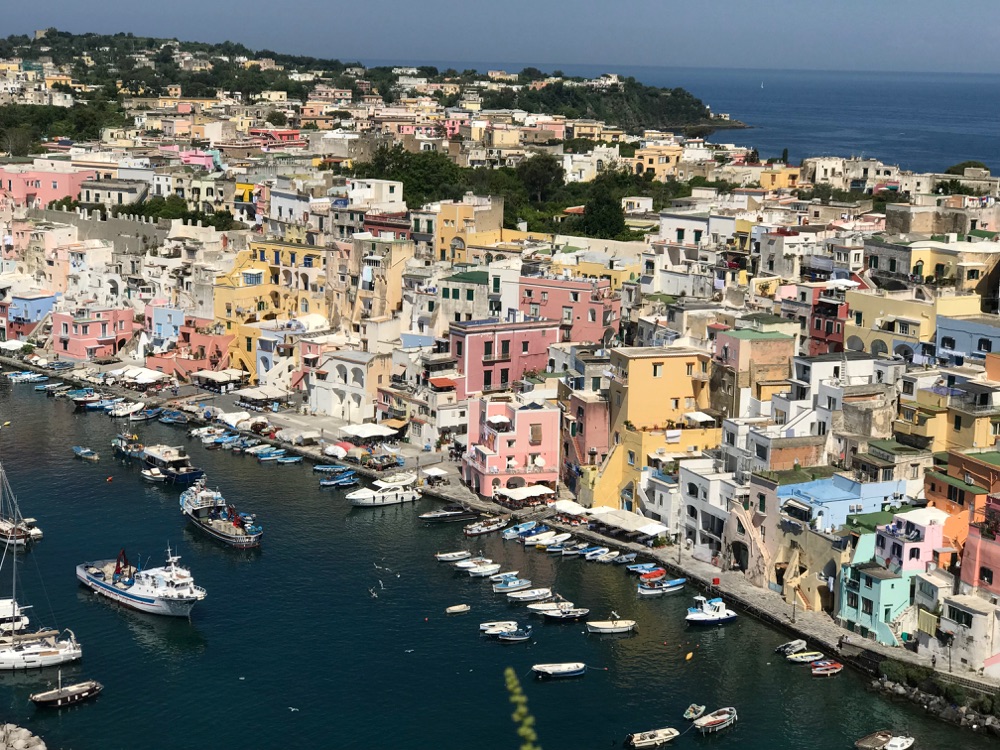
This path is bordered by all sorts of tropical plants, including bromeliads, citrus trees and unusual, exotic specimens, such as the thorny silk-cotton tree.
As you ascend by slowly hiking up the series of switchback paths, the garden changes and becomes even more exotic with more heat-loving plants thriving in ledges – agave, echium and aloes and mounds of cascading rosemary.
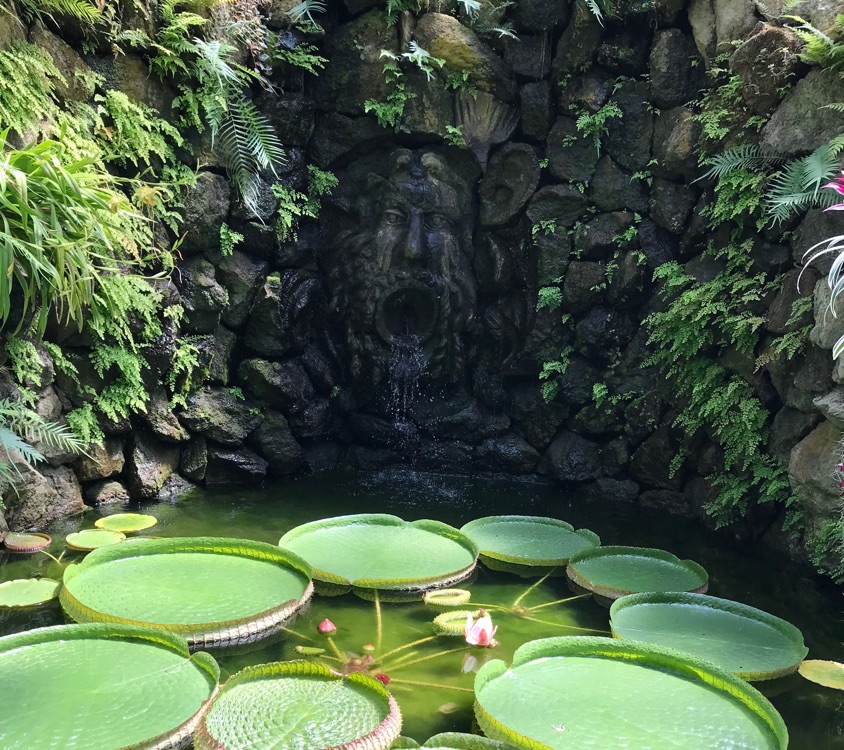
At the top of the garden, there are ponds brimming with frogs. These were making a lot of noise, this being the mating season.
La Mortella has a pleasant tea room located on a shady terrace where it is possible to get an excellent pot of tea in the English-style with accompanying milk jug or, of course, you can also get all the usual Italian refreshments, coffee and prosecco.
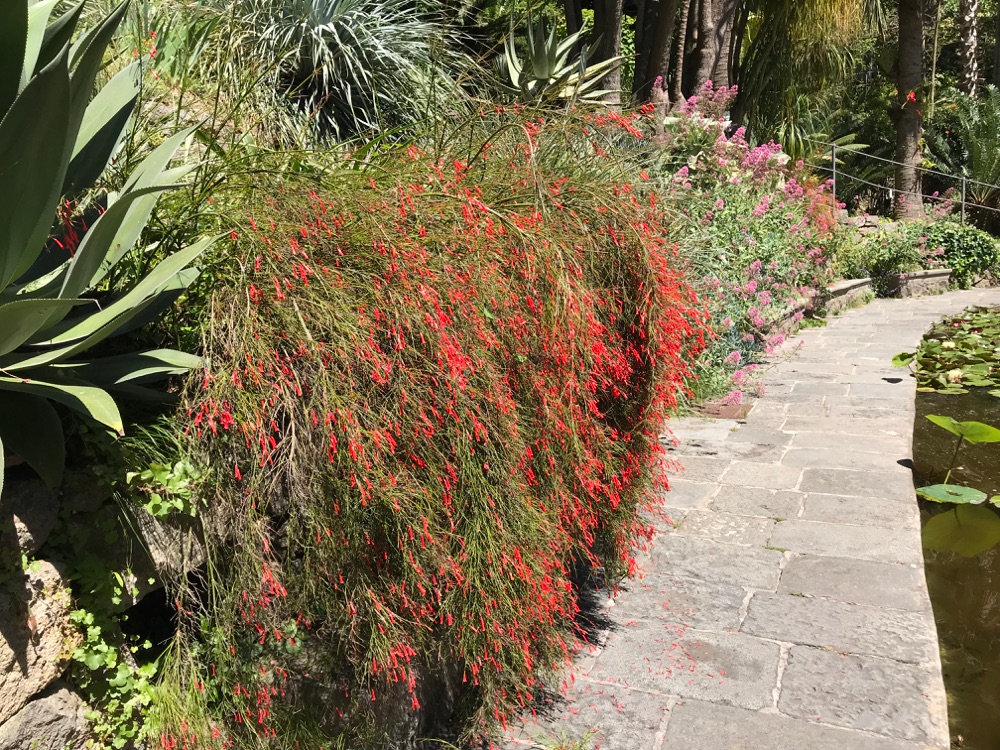
Views of the Tyrrhenian Sea from the top of the garden are exceptionally beautiful. You don’t feel like you ever want to leave. It is always hard to say goodbye to this special island garden retreat.
Back in Naples, we had our farewell dinner together at a boisterous restaurant devoted to the movies of Sophia Loren.
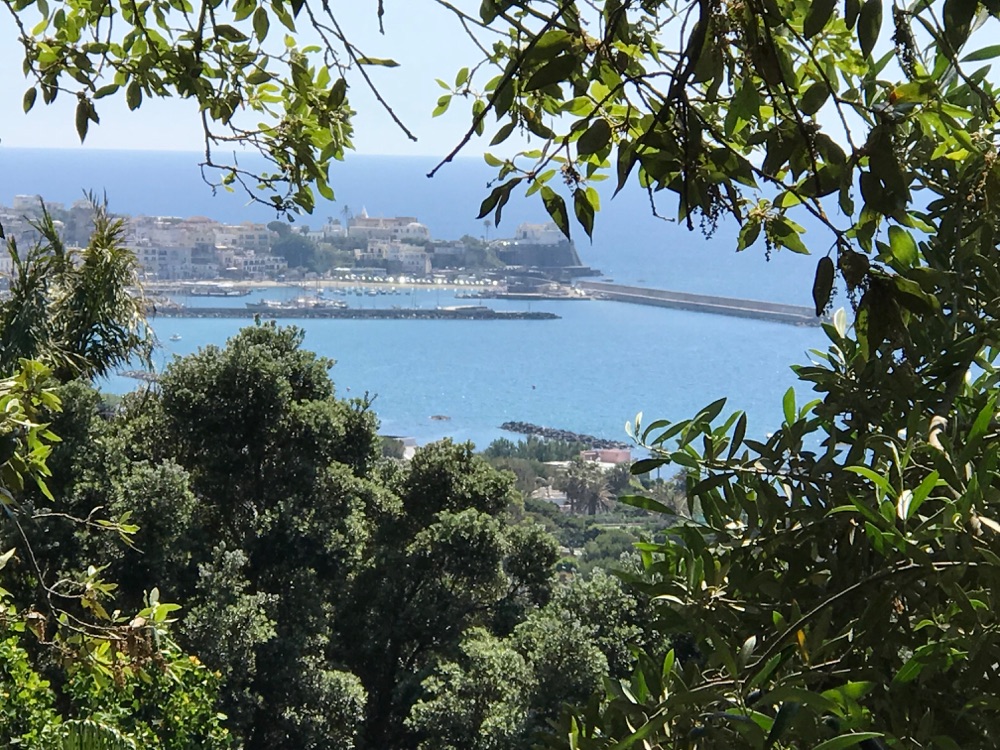
How long will it be before we return for another stunning adventure?
Not long, methinks.
Someone is already whispering in my ear about a sensational idea to explore Umbria and then head over to Greece for a five day island-hopping sailing trip. Stay tuned.
swhysall@hotmail.com
